Nothing beats the sweet, juicy burst of fresh blueberries in your morning cereal or afternoon snack. But if you’ve ever bought a container of these delicious berries only to find them moldy a few days later, you’re not alone. Learning how to store fresh blueberries properly can extend their life significantly and save you money in the long run.
Whether you’ve just returned from a blueberry picking adventure or grabbed a few containers from the grocery store, knowing the right storage methods will help you enjoy these antioxidant-packed gems for weeks instead of days. Let’s dive into everything you need to know about keeping your blueberries fresh, flavorful, and mold-free.
Why Proper Blueberry Storage Matters
Before we jump into the how-to, let’s talk about why storing blueberries correctly is so important. These little superfruits are delicate and highly perishable. They contain natural moisture that can quickly lead to mold growth if not managed properly. Plus, blueberries continue to ripen after being picked, which means they’ll get softer and more prone to spoilage over time.
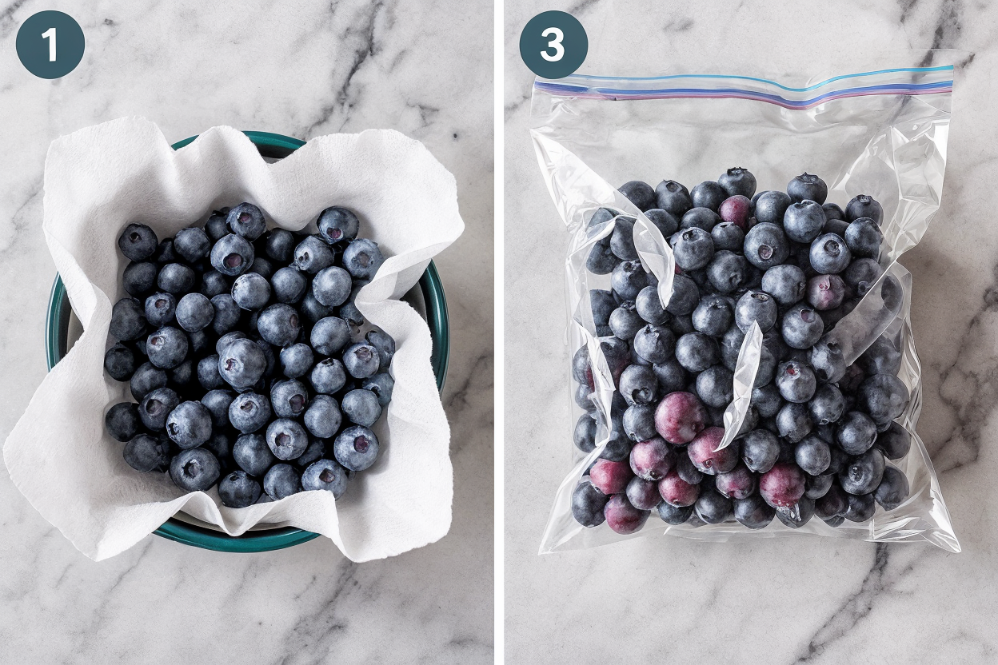
When you store blueberries the right way, you’re not just preventing waste – you’re also preserving their nutritional value. Fresh blueberries are packed with vitamin C, vitamin K, and powerful antioxidants called anthocyanins. These nutrients start to break down once the berries begin to deteriorate, so proper storage helps you get the maximum health benefits from every handful.
The Basic Rules of Blueberry Storage
Rule #1: Don’t Wash Until You’re Ready to Eat
This might seem counterintuitive, but washing blueberries before storing them is one of the quickest ways to encourage mold growth. The extra moisture creates the perfect environment for bacteria & mold to thrive. Instead, keep your blueberries dry until you’re ready to enjoy them.
Rule #2: Remove Damaged Berries Immediately
Inspect your blueberries before storage by removing any that are soft, moldy, or damaged. Even a single compromised berry can accelerate spoilage and lead to mold spreading throughout the container. This preventive step helps extend freshness and maintain quality—similar to how one bad apple can spoil the rest.
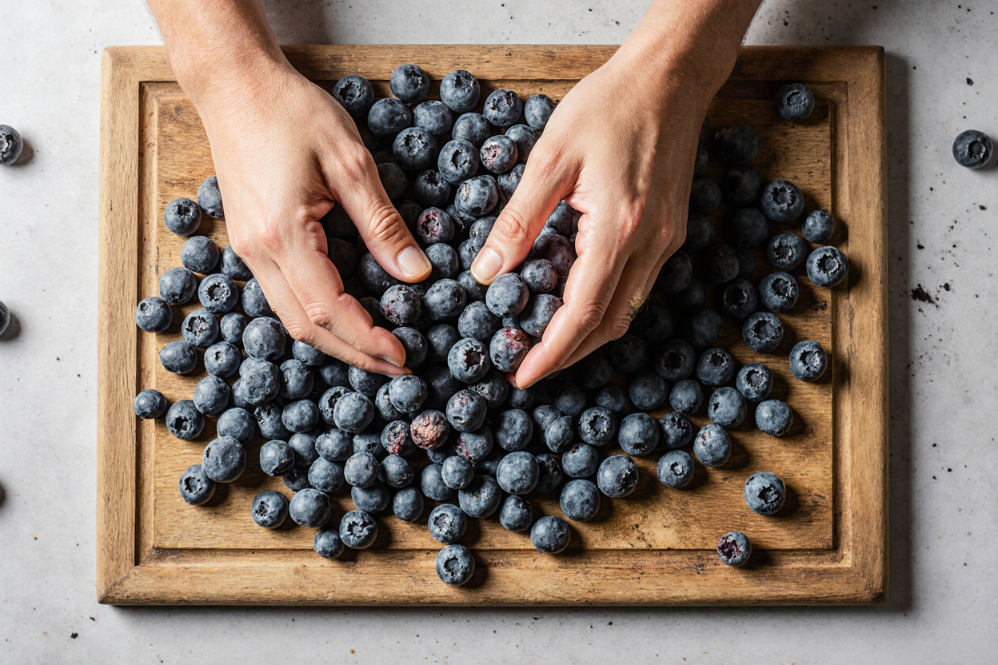
Rule #3: Allow for Air Circulation
Blueberries need to breathe. Storing them in airtight containers might seem logical, but it can actually trap moisture and speed up spoilage. Instead, opt for containers that allow some air flow.
How to Store Fresh Blueberries in the Refrigerator
The Container Method
The refrigerator is your best friend when it comes to storing fresh blueberries for short to medium-term use. Here’s how to do it right:
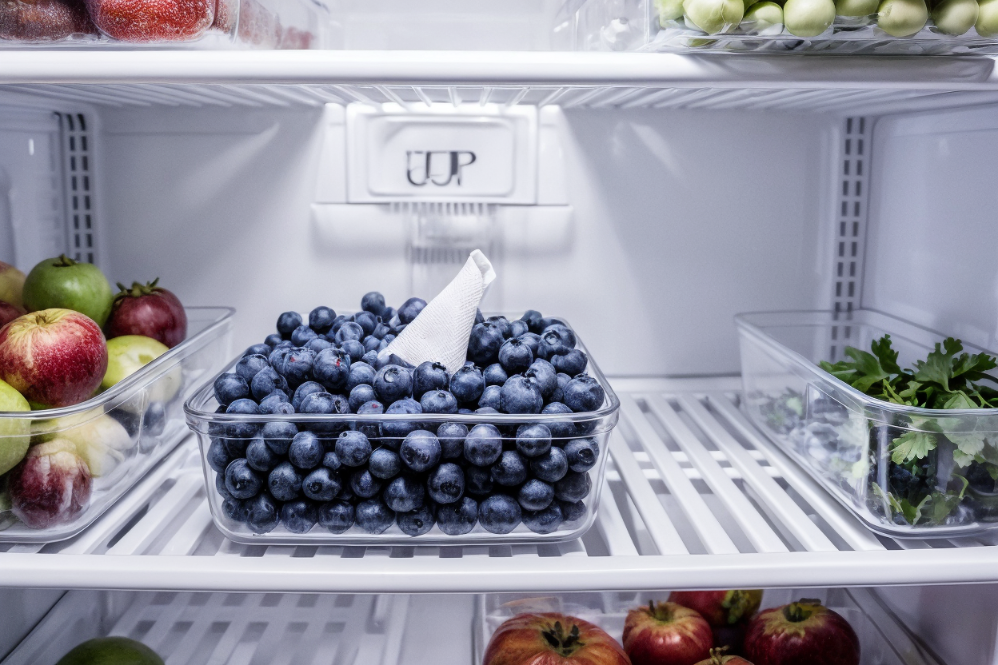
- Choose the right container: Use the original container if it’s well-ventilated, or transfer blueberries to a shallow, breathable container. Paper towel-lined containers work exceptionally well.
- Line with paper towels: Place a paper towel in the bottom of your container to absorb excess moisture. You can also add a paper towel on top of the blueberries.
- Don’t overcrowd: Spread blueberries in a single layer if possible. If you need to stack them, keep the layers shallow to prevent crushing the bottom berries.
- Find the sweet spot: Store your container in the main part of the refrigerator, not in the crisper drawer. The ideal temperature for blueberries is between 32°F and 35°F.
The Colander Technique
Some people swear by storing blueberries in a colander inside the refrigerator. This method maximizes air circulation:
- Place clean, dry blueberries in a colander
- Set the colander inside a larger bowl to catch any drips
- Cover loosely with plastic wrap or a clean kitchen towel
- Store in the refrigerator
The method works particularly well if you plan to use your blueberries within 3 to 5 days.
Freezing Blueberries for Long-Term Storage
Why Freeze Blueberries?
Freezing is hands down the best method for long-term blueberry storage. Frozen blueberries can last up to 10-12 months in the freezer while maintaining most of their nutritional value. They’re perfect for smoothies, baking, and cooking projects.
The Flash Freezing Method

Flash freezing prevents blueberries from clumping together in one giant frozen mass:
- Prepare your berries: Sort through and remove any damaged blueberries. Give them a quick rinse and pat completely dry with paper towels.
- Single layer freeze: Spread blueberries in a single layer on a baking sheet lined with parchment paper. Make sure they’re not touching each other.
- Initial freeze: Place the baking sheet in the freezer for 2-3 hours until berries are completely frozen.
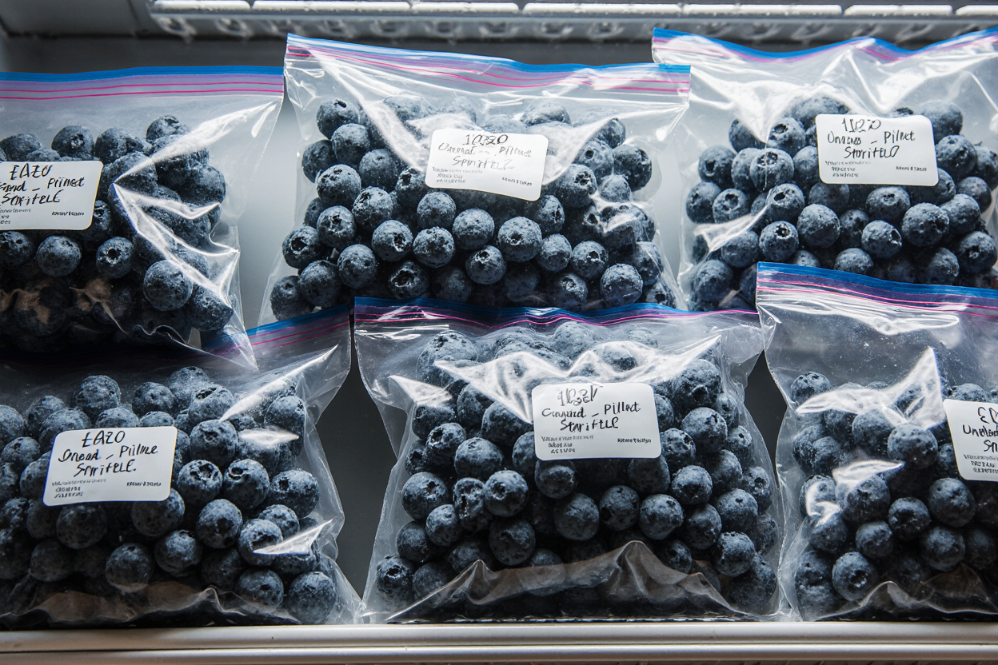
- Transfer to containers: Move frozen blueberries to freezer-safe bags or containers. Remove as much air as possible to prevent freezer burn.
- Label and date: Don’t forget to label your containers with the date. Frozen blueberries are best used within 8-12 months.
Freezing Tips for Best Results
- Don’t skip the drying step: Any excess moisture will create ice crystals and affect texture
- Use quality freezer bags: Invest in heavy-duty freezer bags or vacuum-sealed containers
- Portion control: Freeze blueberries in portion sizes you’ll actually use
- Quick use after thawing: Once thawed, blueberries become softer and should be used within a day or two
Alternative Storage Methods
Room Temperature Storage
While not ideal for long-term storage, blueberries can be kept at room temperature for 1-2 days if you plan to use them promptly. Keep them in a cool & dry place away from direct sunlight. This method works best for very fresh, firm berries.
Dehydrating Blueberries
Dehydrated blueberries make excellent snacks & can be stored for months:
- Wash and dry blueberries thoroughly
- Spread on dehydrator trays or baking sheets
- Dehydrate at 135°F for 12-18 hours (or bake at lowest oven temperature with door slightly open)
- Store in airtight containers in a cool, dry place
Making Blueberry Preserves
If you have more blueberries than you can use fresh, consider making preserves or jam. This traditional preservation method can extend the life of your blueberries for up to a year when properly canned.
Read also: The Power of Lemon: A Health Elixir
The Power of Lemon: A Health Elixir
Common Blueberry Storage Mistakes to Avoid
Mistake #1: Washing Before Storage
We’ve mentioned this before, but it’s worth repeating. Washing blueberries before storage is the #1 mistake people make. The extra moisture encourages mold growth and reduces storage life significantly.
Mistake #2: Storing in the Crisper Drawer
While the crisper drawer is great for many fruits and vegetables, it’s not ideal for blueberries. The humidity levels are typically too high, which can promote mold growth.
Mistake #3: Using Airtight Containers
Completely airtight storage can trap moisture and ethylene gas, causing blueberries to spoil faster. Always allow for some air circulation.
Mistake #4: Ignoring Temperature Fluctuations
Constantly moving blueberries from cold to warm environments (like leaving them on the counter after refrigeration) creates condensation that promotes spoilage.
How to Tell If Your Blueberries Have Gone Bad
Even with perfect storage, blueberries won’t last forever. Here’s how to identify spoiled berries:
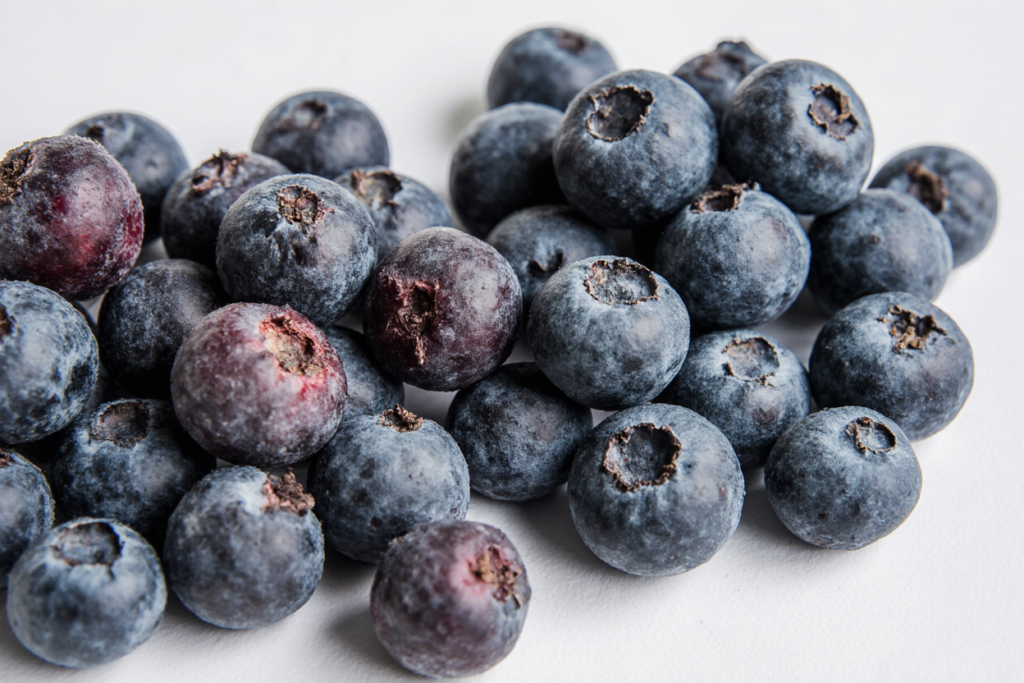
Visual Signs
- Mold (fuzzy white or green growth)
- Wrinkled, shrunken appearance
- Dark spots or discoloration
- Liquid pooling in the container
Texture Signs
- Mushy or overly soft berries
- Berries that fall apart when touched
- Slimy coating
Smell Test
Fresh blueberries should have a sweet, mild aroma. If they smell sour, fermented, or unpleasant, it’s time to toss them.
Maximizing Freshness: Pro Tips from the Experts
Buy Smart
The storage process actually starts at the store or farmer’s market. Look for plump, firm blueberries with a slight bloom (that whitish coating). Avoid containers with juice stains or moldy berries.
The Paper Towel Trick
Change the paper towels in your storage container every few days if you notice they’ve absorbed a lot of moisture. This simple step can extend freshness significantly.
Use the First In, First Out Rule
If you buy blueberries regularly, use older containers before newer ones. This prevents older berries from hiding in the back of your fridge until they spoil.
Consider Your Usage Plans
If you know you’ll use blueberries within a few days, refrigerator storage is perfect. If you buy in bulk or want to preserve seasonal berries, freezing is your best bet.
The Science Behind Blueberry Storage
Understanding why certain storage methods work can help you make better decisions about caring for your blueberries. Blueberries have a natural waxy coating called bloom that protects against moisture loss and bacteria. Washing removes it, so unwashed berries stay fresh longer.
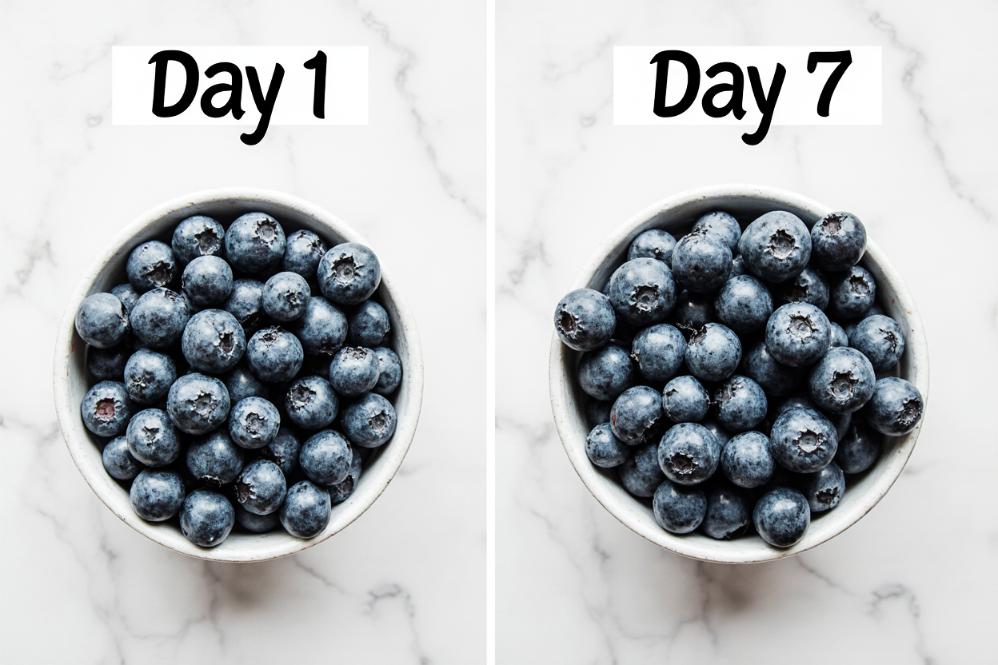
Blueberries also produce ethylene gas, which speeds up ripening and can lead to faster spoilage. This is why air circulation is so important – it helps dissipate this gas and slow down the deterioration process.
Temperature plays a crucial role too. Cold temperatures slow down the growth of mold and bacteria while also slowing down the berries’ natural aging process. However, freezing temperatures change the berry’s cell structure, which is why frozen blueberries have a different texture than fresh ones.
Nutritional Benefits of Proper Storage
When you store blueberries correctly, you’re preserving more than just their taste and texture. You’re also maintaining their impressive nutritional profile. According to the USDA FoodData Central, blueberries are an excellent source of vitamin C, vitamin K, manganese, and dietary fiber.
The antioxidants in blueberries, particularly anthocyanins, are sensitive to light, heat, and air exposure. Proper storage methods help preserve these beneficial compounds that contribute to heart health, brain function, and immune system support.
Seasonal Storage Considerations
Summer Storage
During peak blueberry season (typically June through August), you might find yourself with an abundance of fresh berries. This is the perfect time to freeze portions for year-round enjoyment. Summer’s higher temperatures also mean you’ll need to be extra vigilant about keeping berries cool and dry.
Off-Season Storage
When buying blueberries out of season, they’ve likely traveled long distances and may be less fresh to begin with. Pay extra attention to sorting out damaged berries and use them more quickly than you would peak-season fruit.
Environmental Impact of Proper Storage
Reducing food waste through proper storage isn’t just good for your wallet – it’s good for the environment too. The U.S. Environmental Protection Agency (EPA) highlights food waste as a major source of greenhouse gas emissions. Storing your blueberries properly helps extend their shelf contributing to waste reduction and lowering your environmental footprint.
Troubleshooting Common Issues
Problem: Berries Getting Moldy Quickly
Solution: Ensure berries are completely dry before storage, improve air circulation, and check that your refrigerator temperature is correct (32-35°F).
Problem: Berries Becoming Soft and Mushy
Solution: Don’t wash before storage, avoid overcrowding in containers, & handle gently to prevent bruising.
Problem: Berries Losing Flavor
Solution: Don’t store for too long, maintain proper temperature, and avoid temperature fluctuations.
Making the Most of Your Stored Blueberries
Fresh Berry Uses
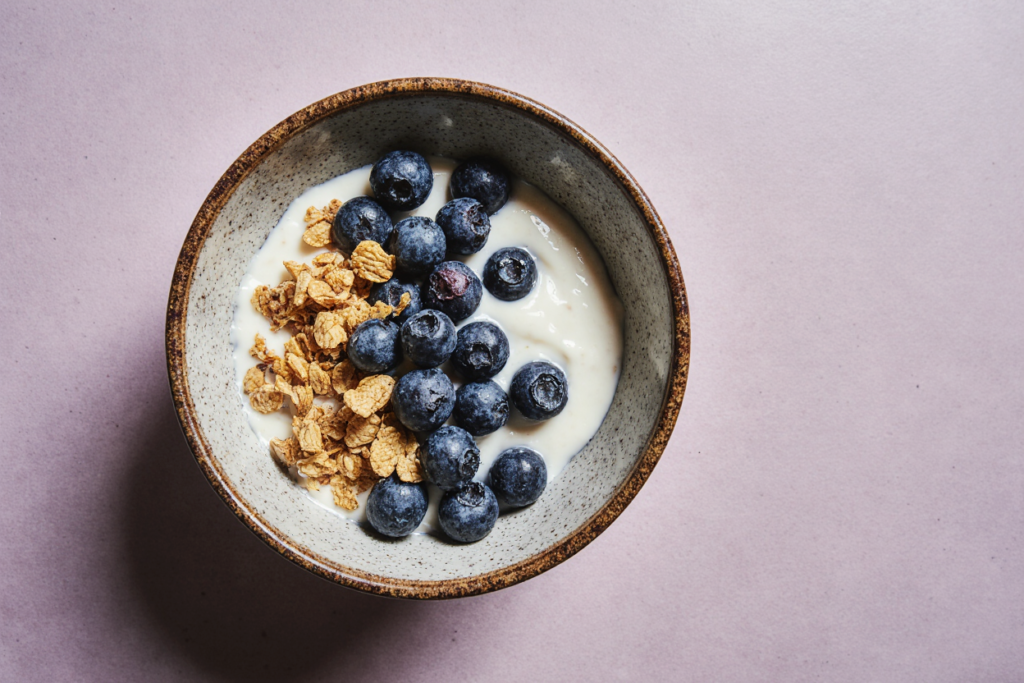
- Add to cereal, oatmeal, or yogurt
- Blend into smoothies
- Eat as a healthy snack
- Top pancakes or waffles
Frozen Berry Uses
- Bake into muffins, pies, or cobblers
- Blend frozen into smoothies (no need to thaw)
- Make homemade jam or preserves
- Add to overnight oats
Creative Storage Solutions
Consider investing in specialized berry storage containers with built-in colanders or ventilation systems. Some people also swear by using produce wash solutions before storage, though this should be followed by thorough drying.
Conclusion
Storing fresh blueberries properly doesn’t have to be complicated, but it does make a huge difference in how long you can enjoy these nutritious, delicious berries. Remember the key principles: keep them dry until you’re ready to eat them, provide good air circulation, maintain consistent cool temperatures, and remove any damaged berries promptly.
Whether you choose refrigerator storage for short-term use or freezing for long-term preservation, these methods will help you get the most value from your blueberry purchases while reducing food waste. With proper storage techniques, you can enjoy fresh-tasting blueberries for weeks or even months after bringing them home.
The next time you find yourself with a bounty of beautiful blueberries, you’ll have the confidence and knowledge to store them properly. Your future self will thank you when you’re enjoying perfectly preserved berries in your morning smoothie or favorite baked goods, long after blueberry season has ended.







